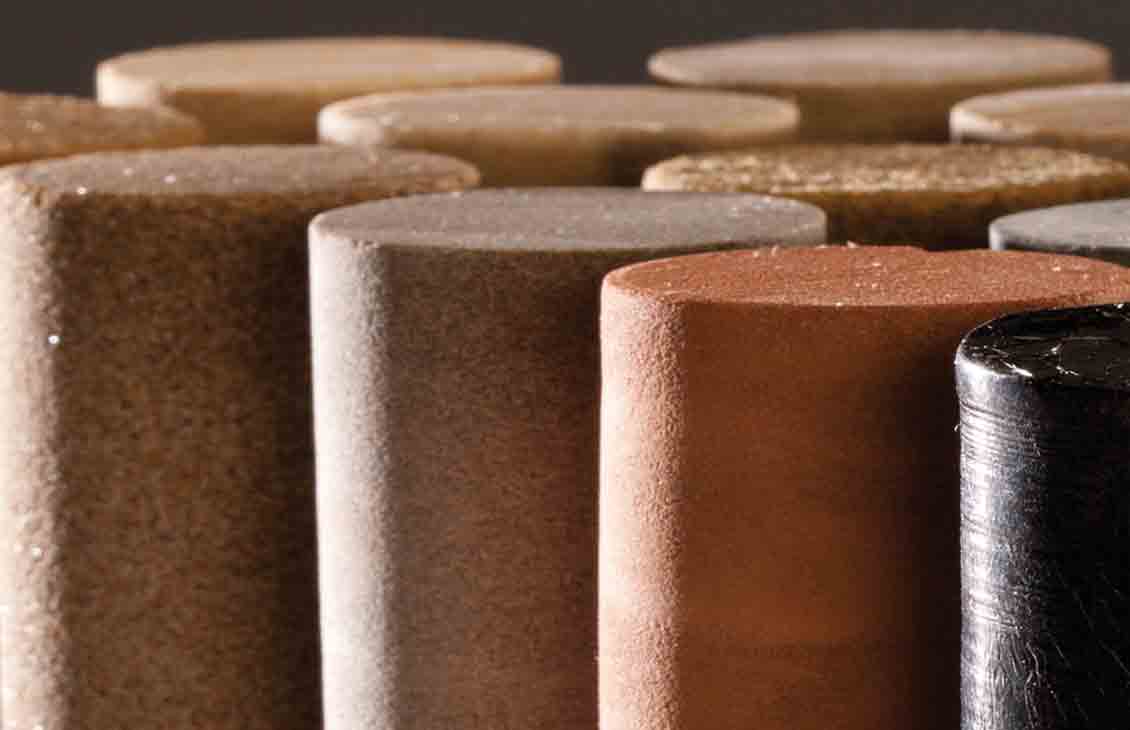EN 1926 Determination of Uniaxial Compressive Strength of Reservoir Rocks
The CEN standard EN 1926 provides a method to determine the uniaxial compressive strength (UCS) of reservoir rocks. This service is crucial in the oil and gas sector, where understanding rock properties is essential for optimizing drilling operations, predicting wellbore stability, and ensuring effective reservoir management.
The UCS test is performed by subjecting a cylindrical specimen to uniaxial compression until it fails. The standard specifies detailed procedures for sample preparation, testing, and reporting. Specimens are typically 50 mm in diameter and 100 mm long, unless otherwise specified. The procedure ensures that the rock's inherent strength can be accurately measured under controlled conditions.
During the test, specimens are placed between two plates of a compression machine. A load is gradually applied to the specimen until failure occurs. The force at which failure happens is recorded in kilonewtons (kN). This value is then used to calculate the UCS using the formula:
\[ \text{UCS} = \frac{\text{Load}}{\text{Specimen Area}} \]The specimen area is calculated as \(A = \pi r^2\), where \(r\) is the radius of the specimen. The standard also includes considerations for specimen preparation, such as ensuring that the rock's natural texture and structure are preserved to avoid any bias in results.
This testing method is particularly important because it helps engineers and geologists understand how rocks will behave under stress conditions encountered during drilling or production processes. By knowing the UCS of reservoir rocks, stakeholders can make informed decisions about well design, hydraulic fracturing, and other critical operations.
The uniaxial compressive strength test is also valuable for assessing rock quality in exploration phases. High UCS values indicate strong, stable rocks that are less likely to cause issues during drilling or production. Conversely, lower UCS values may suggest weaker rocks prone to failure, which can lead to operational challenges.
| Specimen ID | UCS (MPa) |
|---|---|
| S123456 | 78.5 MPa |
| S987654 | 56.2 MPa |
| S345678 | 85.1 MPa |
| S654321 | 60.9 MPa |
The results of these tests can be used to create detailed geological models that inform strategic decisions in drilling and production processes.
- Optimizes wellbore design for stability.
- Predicts potential rock failure during hydraulic fracturing.
- Aids in the assessment of reservoir permeability and porosity.
The accuracy and reliability of the UCS test are paramount, as they directly impact operational safety and efficiency. The standard ensures that tests are conducted consistently across different laboratories, providing a robust basis for decision-making.
Industry Applications
- Determining optimal drilling parameters to minimize rock failure during borehole penetration.
- Evaluating the stability of potential reservoirs and identifying areas suitable for hydraulic fracturing.
- Assessing the integrity of rock formations in geothermal energy projects.
- Serving as a quality control measure for rock samples used in geological surveys.
| Step | Description |
|---|---|
| 1 | Select representative rock specimens from the reservoir. |
| 2 | Clean and dry the specimens to remove any contamination or moisture. |
| 3 | Measure the dimensions of each specimen accurately. |
| 4 | Place the specimen between plates in a compression machine. |
| 5 | Apply load at a constant rate until failure occurs. |
| 6 | Record the maximum load applied before failure. |
| 7 | Calculate UCS using the formula provided above. |
The results of these tests are crucial for ensuring that drilling and production operations proceed smoothly without encountering unforeseen rock failures or stability issues. This standard is widely used in both exploration and production phases, making it an indispensable tool for the oil and gas industry.
Eurolab Advantages
EuroLab provides unmatched expertise in conducting EN 1926 tests with precision and accuracy. Our state-of-the-art facilities are equipped with advanced compression machines that ensure consistent test conditions across all specimens. We employ highly trained technicians who adhere strictly to the standard's requirements, ensuring reliable results.
Our commitment to quality is reflected in our ISO/IEC 17025 accreditation, which guarantees that our laboratory meets the highest international standards for competence and performance. This accreditation ensures that clients receive consistent, accurate, and reproducible test results every time. Additionally, EuroLab's extensive experience in oil and gas testing allows us to provide valuable insights into rock behavior under stress conditions.
We offer comprehensive support throughout the testing process, from sample preparation to reporting. Our experts can advise on optimal specimen selection and preparation techniques to ensure that the most accurate UCS values are obtained. This service is invaluable for clients seeking detailed geological data to inform their operational strategies.
Customer Impact and Satisfaction
EuroLab's EN 1926 testing services have significantly contributed to the success of numerous oil and gas projects by providing reliable UCS values that are crucial for decision-making. Clients appreciate our ability to deliver accurate results consistently, which has enhanced their confidence in EuroLab as a trusted partner.
One of our customers, a major international oil company, remarked, 'The UCS tests provided by EuroLab have been instrumental in optimizing drilling operations and ensuring wellbore stability.' Another client noted that the detailed geological data obtained from these tests helped them identify high-strength reservoir rocks more effectively. These positive feedbacks reflect our commitment to excellence in testing services.
EuroLab's focus on precision, accuracy, and consistency has earned us a reputation as a reliable partner for oil and gas testing. Our clients benefit from the expertise of our team and the reliability of our results, which are essential for navigating the complexities of reservoir rock properties.





